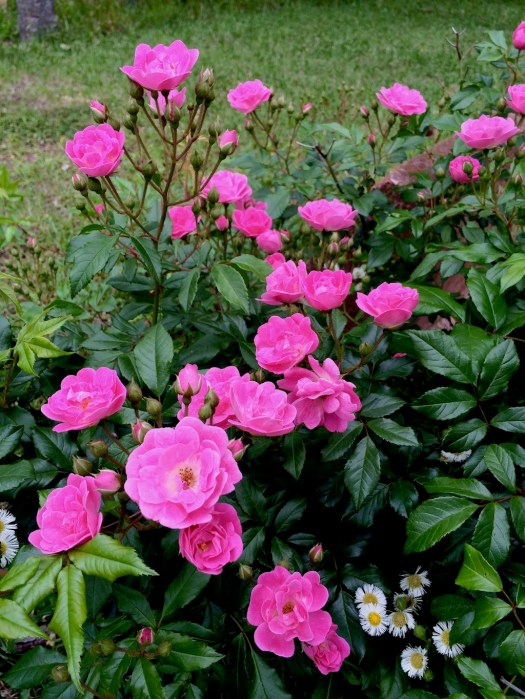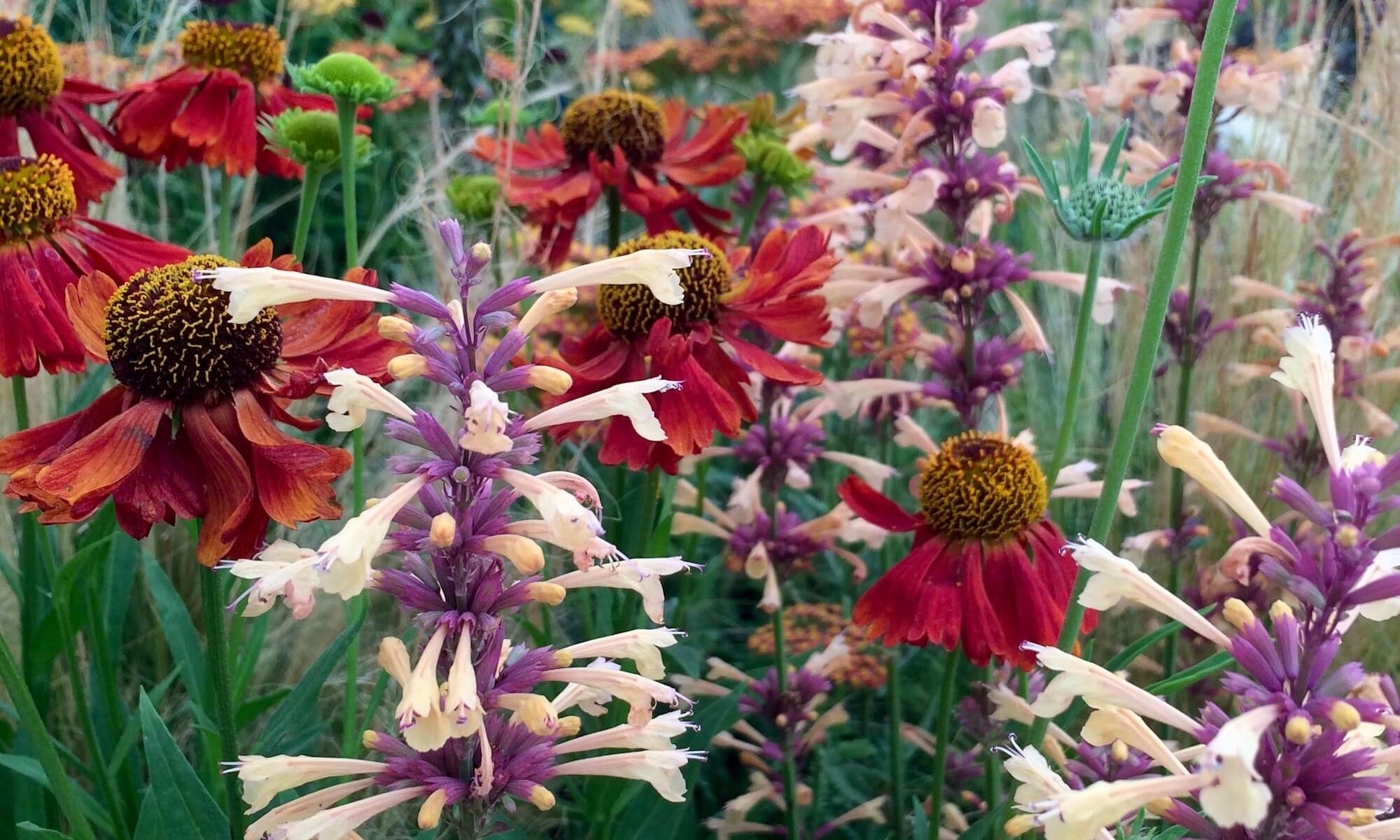
When I first started working with roses and discovered I was going to need to distinguish between 30 or 40 pinks and know their names, I resorted to flash cards: the kind young children use to learn words. In no time at all I was well on the way to a lifetime of floral nitpicking. Is a the shape of a double flowered rose technically a shallow cup, recurved, a pompon or a chalice? That kind of thing.
So I often notice when people mistake a peony or a camellia for a rose, even if I’d have to concede that the colours and forms of their flowers can be essentially the same.

I wish I could get the colours even more similar to better illustrate my point, but that’s just me nitpicking again, isn’t it?

So there you have it. Variations on a theme. All glorious, to my eyes, each with their own particular character: with perkier or more demure petals; with equal, decreasing or ruffle-style petal lengths; with smooth petal edges or wriggly ones.

If you’re not 100% sure which is which, you’re in good company. I’ve seen a cut rose mistaken for a peony in several of Britain’s leading magazines, which I’ll not name, to spare their blushes.
An easy way to tell peonies, camellias and roses apart is by their leaves. Peonies are the easiest to distinguish: they have elegant and deeply lobed, compound leaves, rather like spread fingers.

Camellias have the simplest leaf form of all: the classic, single, oval leaf shape, tapering to a point. They are thicker than a rose’s leaves and are arranged alternatively on the stem, rather than opposite each other, as roses’ leaves are. Camellia leaves often feel waxy or glossy and they are thick, almost leathery.

Rose leaves are thinner and more delicate. Usually there are five leaflets in each group of rose leaves, but you can also find roses with three, seven, nine or eleven leaflets per group:

If you have a closed bud before you, peony buds are plump and round; rose buds taper into pointed, sometimes feathery tips; and camellia buds are oval. Hope this helps!
§
If you love one or more of these classic flowers, and want to read more about them, choose from the following:

Gorgeous images .. the first is a camellia 😃 Would all the others be roses?
The third one is a peony, but apart from that, you’re spot on. I tried to make it as confusing as possible!
You did a great job 😃
Wonderful post Susan! I would love to see your list of 30 or 40 names for pink please? When I paint roses from photographs I need to make sure that the painting is true to the rose when the colours in the photos can be a few steps removed given camera differences and then the printing process as well. If I could learn the 30 pink names I could note down the name when I photograph the rose and I could also work out how to colour mix each of those shades too, it would be great!
Sorry Michelle, I have misled you by falling back into a form of shorthand, ‘pinks’ being short for ‘pink roses’. Words for shades of pink probably have more of a connection with marketing than the science of colour. Ideas like palest pink, blush pink, shell pink, lipstick pink, rose pink or lilac pink are open to interpretation. Roses are sometimes called pure pink, but what that means in practice, I’d struggle to explain, even though I have a firm impression of what having a pure, fresh, natural colour means in relation to roses, compared to the artificial colours you sometimes see. One idea would be for you to name the colour yourself as you make it by referencing a comparison you see clearly. For example, there are thousands of shades of lipstick pink, but I always have an idea of a particular one when I use it to describe a flower. You might see a different shade in your mind. After a while you’ll have the references you need. Good luck!
Thank you Susan, you have inspired me to think differently about classifying pink roses and I can see I have a big project ahead of me, but it will be fun!